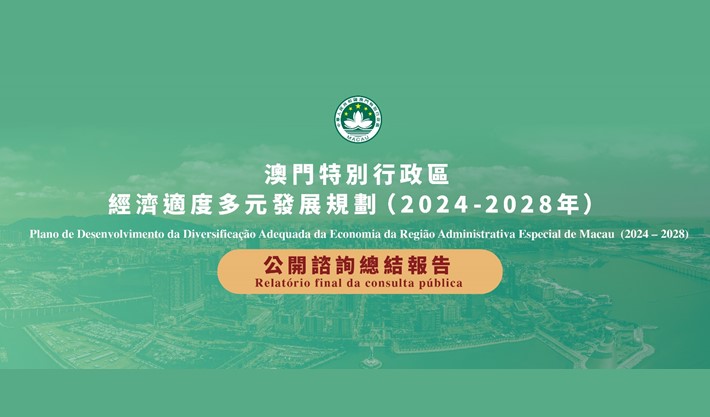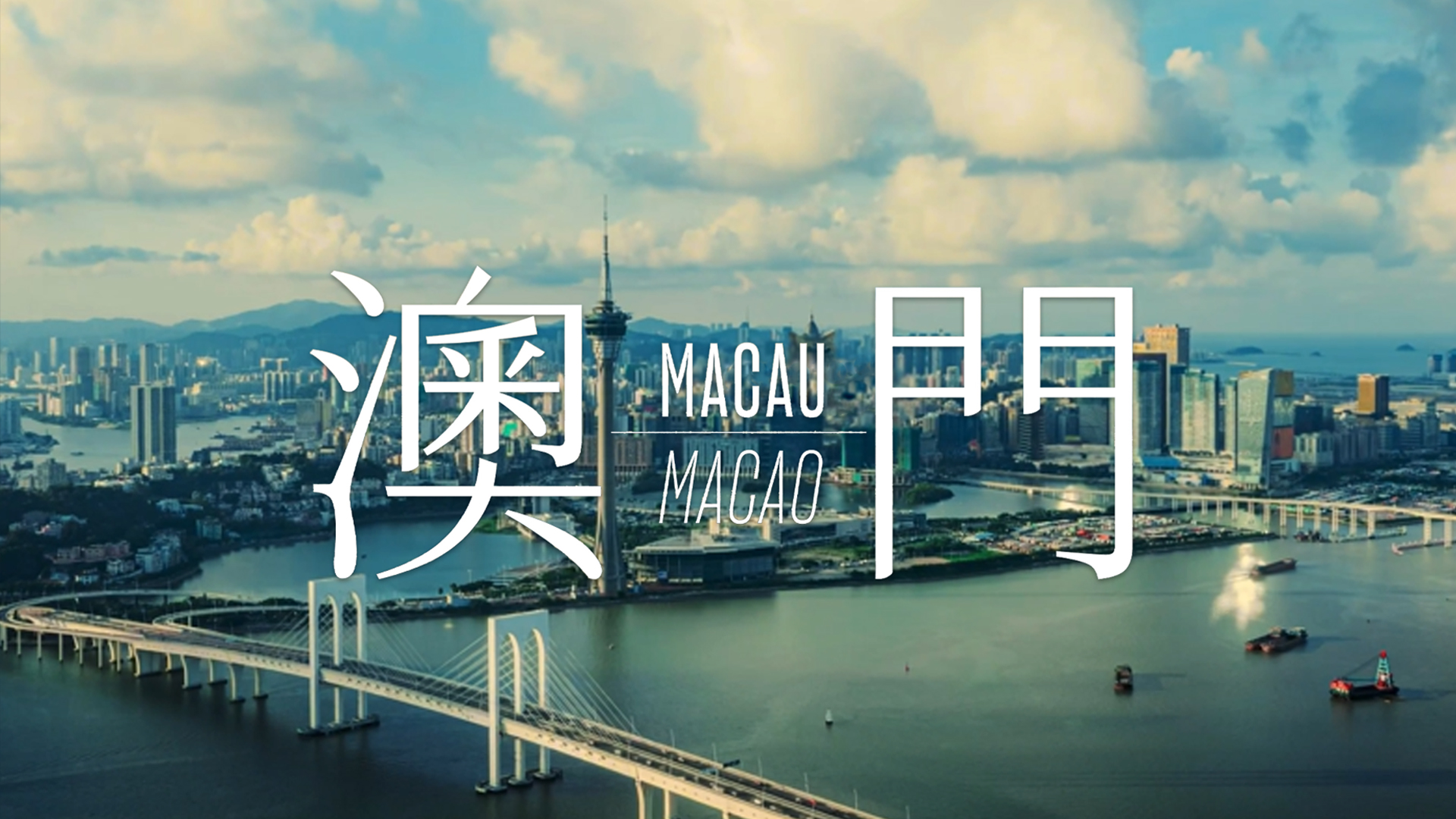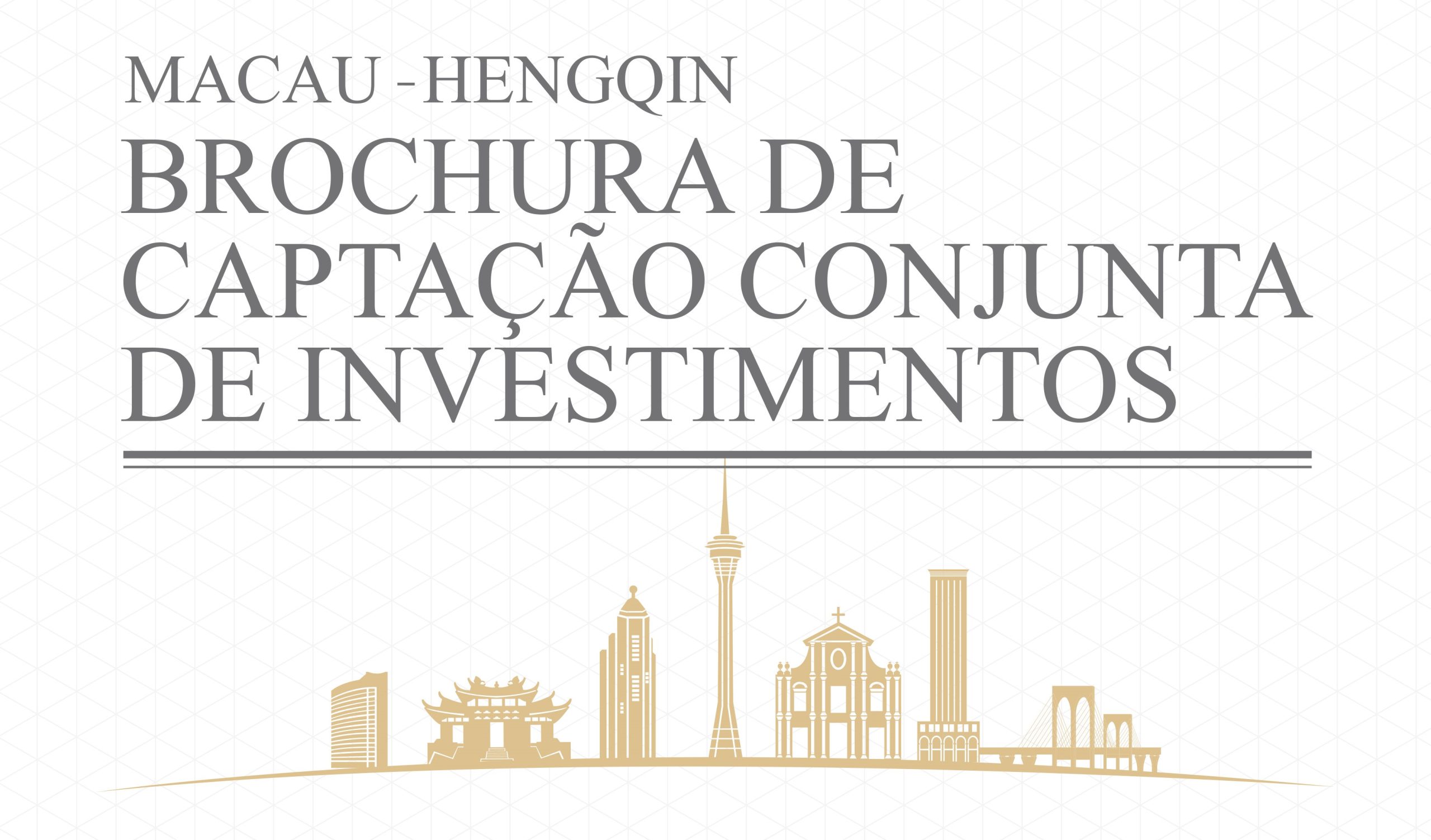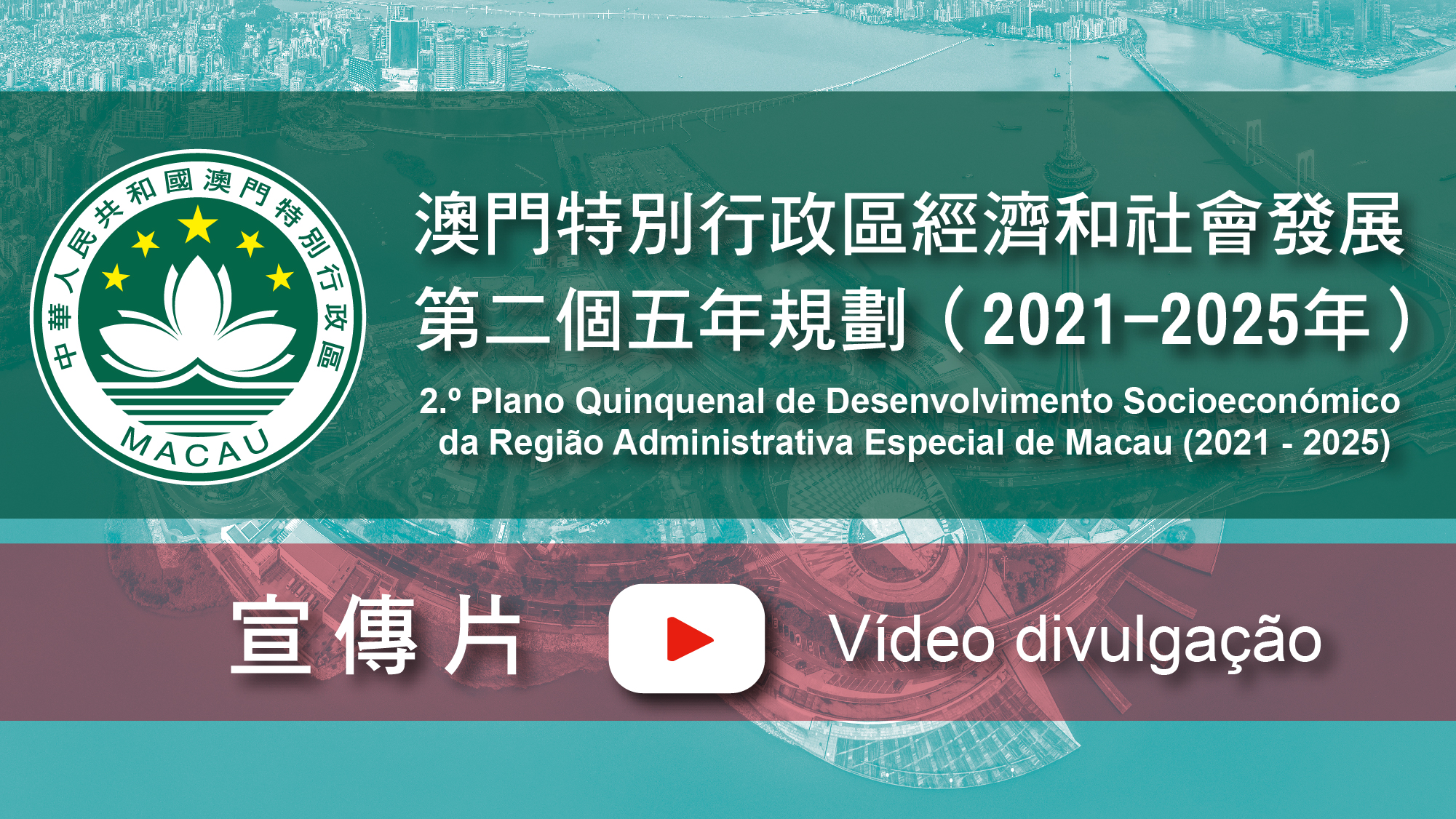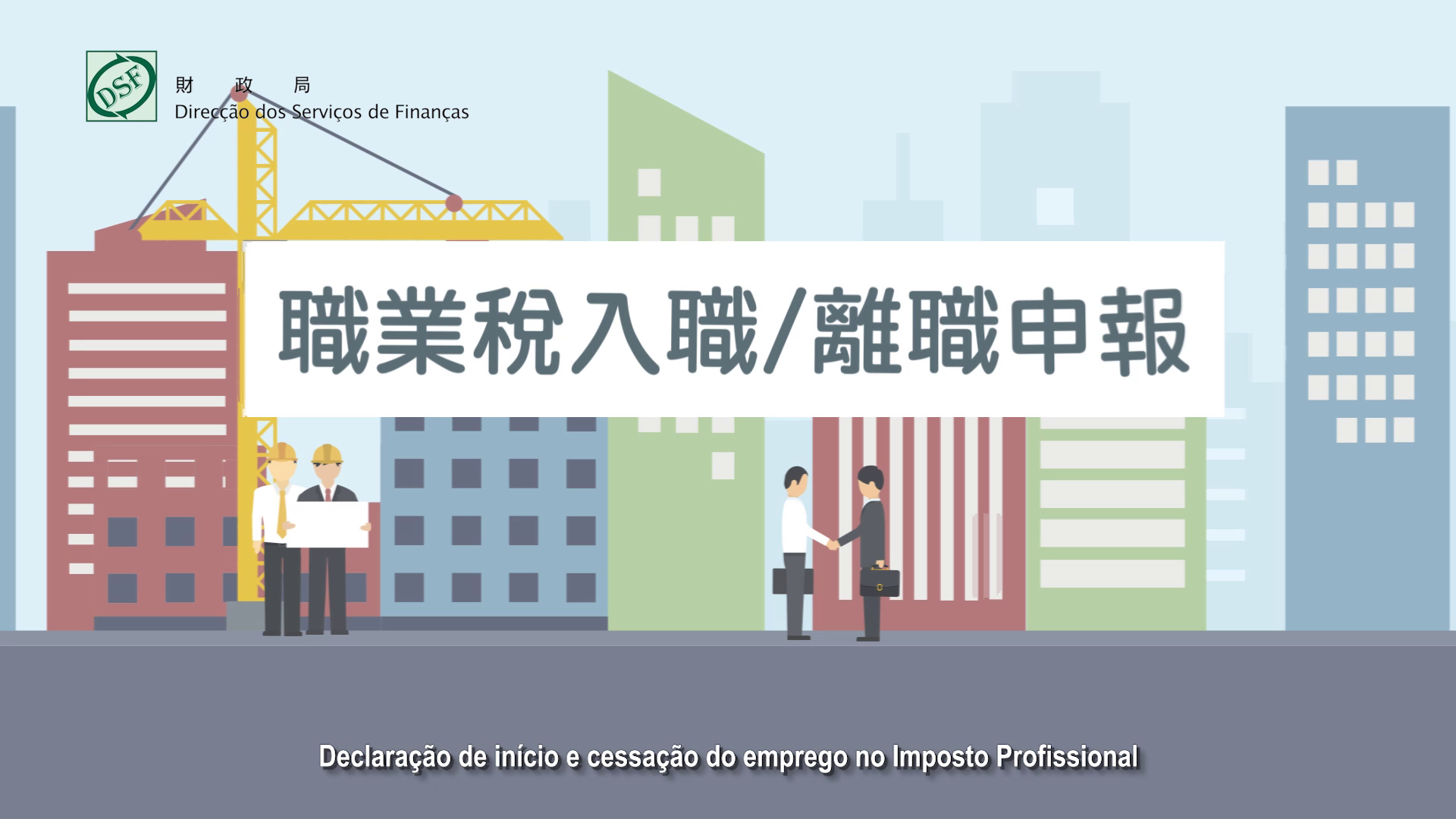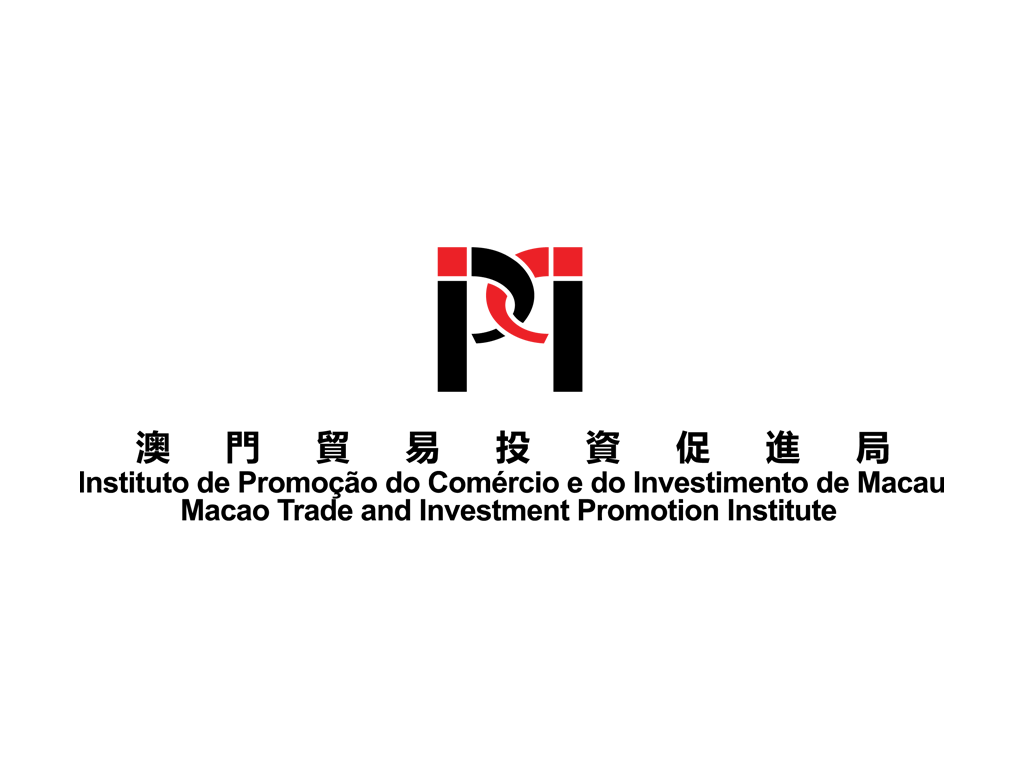Pesquisar
Logistics Industry, Early Bird in Macao’s Economic Diversification Process
Brian
Since the liberalisation of its gam ing industry in early 2002, Macao has become one of the most interna tionally known cities with the greatest potential for development as its econ omy is being driven by the gradual completion of new gaming and enter tainment facilities.
After evaluating the many advanta geous conditions, people have become more and more concerned about how to move on to the next stage of develop ment, i.e., the direction of economic diversification.
In mid-March this year, the 11th five-year plan was passed, by a large ma jority, by the 4th session of the 10th Na tional People’s Congress. Hong Kong and Macao were included for the first time in the overall plan for the next five years. It clearly states that the central government shall maintain the long-term prosperity and stability of Hong Kong and Macao. What is worth think ing about is that the 11th five-year plan states “to support Macao to develop service industries, such as the tourism industry, and to promote the economic diversification.”
No matter how one chooses to interpret it, it cannot be denied that the central government’s statement af firms the economic development direc tion of Macao SAR government, i.e. to promote the economic diversification through the development of tourism and service industries driven by gaming industry.
State leaders made further explana tions to this new topic on various occa sions. On 7 April, Premier Wen Jiabao, during his visit to Cambodia, talked about the economic situation in Hong Kong and Macao. He said, “Macao’s overall situation was very good. The trend of stable growth is being main tained. Macao needs to work harder and pay attention to economic restruc turing in order to build itself into a prosperous city with gaming and tour ism as the pillar industries and with others growing rapidly.”
On 21 April, Vice President Zeng Qinghong, while receiving Chief Ex ecutive Edmund Ho at the closing ceremony of the 2006 Annual Confer ence of Boao Forum for Asia in Hainan province, indicated that Macao had maintained a sound economy since the handover. It is expected that Macao SAR government, together with the business community, will work harder to promote moderate economic diversi fication and thus lay a solid foundation for its long-term growth.
Economic Restructuring in a Scientific Way to Realise Moderate Diversification
Chief Executive Ho clearly indi cates that the economic diversification of Macao is an important measure of the central government to support the long-term sustainable development of Macao. The SAR government has al ready mobilised resources to study the future economic structure, especially on the issue of diversification. Relative studies are expected to be completed in six months to a year’s time.
Chief Executive Ho emphasised that upon the completion of these stud ies based upon scientific evidence, con sensus from the public is needed, espe cially in the industrial and commercial sectors, on how to fully utilise the poli cies of the central government to sup port Macao, and adjust its economy to prepare for the next step of long-term economic diversification according to the actual situation.
To promote economic diversifica tion through economic restructuring is the only way for Macao to realise future sustainable development. With the pat tern formed and the goals set, the whole society of Macao, especially industrial and commercial sectors, is inspired by the expectations of the central govern ment and the SAR government. People are looking for ways leading to “diversi fication”.
Logistics Industry, a Surging Force of Economic Growth
The import and export industry was one of the four pillar industries of Macao’s economy. People believe that its greatest potential is for it to be transformed into a logistics industry by utilising regional advantages. “Macao’s hotel industry as well as the convention and exhibition industry is growing rap idly. Every year nearly 20 million peo ple enter and leave Macao. This causes an enormous internal demand; therefore there is a logistics line which has never been seen before. ” Mr. Jackson Tsui, Chairman of the Board of Directors of Macau Importers & Exporters Associa tion, says, “One can expect that the lo gistics industry will be a buoyant new industry in Macao. It is also a good point from which to start the process of economic restructuring in order to promote economic diversification. Its future is very promising.”
Mr. Tsui says the growth of logis tics industry is a surging force in Ma cao’s economic growth. After the han dover, the Macao SAR government and the logistics industry, is putting a lot of effort into constructing the necessary software and hardware facilities.
Internal Demand Surges to gether with Import and Export
Mr. Tsui’s expectations and hopes for Macao’s logistics industry are based upon his judgment of the performance and the current trend in the import and export industry in recent years.
Assisted by the Facilitated Indi vidual Travellers Scheme (FIT) and CEPA, Macao’s gaming and tourism in dustries have grown over the past few years. Many large private or public projects serving the pillar industries are being constructed. The volume of im ported construction materials is grow ing rapidly. Macao presents various types of investment opportunities in its booming economy. There are very active diversified investments. The rapid growth in the number of tourists, “forms an enormous internal demand, therefore there is a logistics line which has never been seen before” Many in ternational famous brands are now in Macao and promote the growth of its import and export industry.
According the Statistics and Census Service (DSEC), Macao’s import vol ume exceeded MOP20 billion in 2002, and continues to grow annually. The Macao strengthens its internal traffic net work as part of logis tic development import volume in 2005 was MOP31.34 billion, a growth rate of 12.3% com pared with 2004. The growth is mainly driven by the following commodities: fuels and lubricant oil, capital com modities, consumer goods, and raw raw and semi-manufactured materi als, each growing by 41.3%, 20.6%, 9.3% and 5.4% respectively. In raw raw and semi-manufactured materials, the growth rate of construction mate rial is as high as 149%. Statistics also show that the total export volume of in 2005 was MOP19.82 billion, a drop of 12.1% compared with the year before. The growth rates for export of local products and re-export products are -17.1% and 4.2% respectively. Statistics indicate that the export volume from January to August 2005 continued to drop, but in September the trend was reversed and the export volume contin ued to grow into 2006.
In the first quarter of 2006, the total export volume of Macao was MOP4.77 billion an increase of 36.4% compared with the same period of last year, among which, the growth rates of local products and re-export products are 47.7% and 11.3% respectively. The total import volume grew by 28.3% compared with the same period of last year, to MOP7.66 billion. The growth is mainly driven by commodities such as fuels and lubricant oil, capital goods, consumer goods, and raw and semi-manufactured materials, each growing by the rate of 50.1%, 28.8%, 28.1% and 22.4% respectively.
Linking Overseas and Regional Integration
The Opening of Inter-city Net work Is Helpful to Economic Diversification
Mr. Tsui says, since the handover, the Macao SAR government has been implementing a regional co-operation policy of “Linking places far away and integrating with neighbouring regions” to expand the scope of development for the economic diversification of Macao. In recent years, co-operation is being raised from private level to govern mental level. The cooperative of Ma cao with the mainland, especially with neighbouring provinces and cities is be ing enhanced and the benefits are being further realised. Recently the Macao SAR government signed four co-op eration agreements with Shenzhen mu nicipal government which will surely promote areas of economy and trade, tourism, logistics industry and finance on both sides. The logistics industry of Macao can also take advantage of these agreements to achieve further growth.
“Transportation is the key condi tion to develop the logistics industry.” Mr. Tsui states. Due to geographic and historical reasons, Macao does not have a deep-water port suitable for long-range shipping. Although Macao In ternational Airport has been open for 10 years there are still very few airlines using it, which is failing to satisfying needs of Macao’s rapid growing econo my since the handover. For a very long time, Macao’s cargo transportation has relied solely on Hong Kong. Nowa days, with the growth of the tourism and gaming industries, Macao’s logistics industry is facing an enlarged develop ment space. Macao has to find chan nels for the expansion of the industry in order to reduce the costs and increase competitiveness. The logistics indus try cannot grow without an integrated transportation system. The Macao SAR government and the industry are working hard in this re spect. In 2005, with strong support from Shenzhen and Macao governments, the industry conducted a “pio neering” experiment and had the first taste of the newly opened transporta tion channel. The two gov ernments have already offi cially signed a co-operation agreement to quicken the steps taken by the logistics industry and this is a new driving force to promote the develop ment of Macao’s logistics industry.
Mr. Tsui recollects, on 18 May 2005, for the first time in history, Ma cao sent its goods to Europe and Ameri ca via land transportation to Shenzhen. This was the first time that the inter national integrated transportation cen tre in Shenzhen had been used to ex port goods. Although it is promising, in order to further reduce the costs, one has to develop a land-sea integrat ed transportation system and change the current situation, whereby land transportation of containers is isolated. Shenzhen has a 3-dimensional passen ger and cargo transportation system. Shenzhen’s modern port ranks No.4 in the world. This is the new hope of Macao’s logistics industry. Therefore, the Industrial Association of Macau, Macau Importers & Exporters Associa tion, Macau Shipper’s Association and Association of Knitting and Spinning industry of Macau requested that the two governments support the opening of sea transport route linking Macao and Shekou, Shenzhen. Consultations are going smoothly. It is hoped that the sea route will be open as soon as pos sible. A plan has been submitted to the two governments and the final decision is expected.
The development space for Macao’s logistics industry “is totally different from that of the past,” states Mr. Tsui. Today, Macao is not only dealing with the needs of its 498,000 residents. The rapid growth of the tourism and gaming industries has attracted nearly 20 mil lion visitors to Macao. The booming hotels and convention and exhibition industry, together with future cargo flow after the completion of Macao Zhuhai cross-border industrial zone, will form a huge logistics supply chain. Therefore, “There is a huge development space” for Macao’s logistics industry. It is bound to be the starting point in the process of economic restructuring and moder ate economic diversification. The de velopment of the logistics industry will employ semi-skilled, middle aged work ers, thus creating a bigger employment market.
He indicates that the equipment demands of hotels, especially luxuri ous ones, are huge, involving all kinds of goods. The development of the ho tel industry will promote the growth of third-party logistics companies and warehousing. This also provides local SMEs space to transform.
The Macao SAR government has completed the land reclamation and infrastructure projects near the Macau airport. This is for private investors to build warehouses. It also serves as the necessary hardware facilities for the fu ture growth of Macao’s logistics indus try by enhancing Macao’s capability of land, sea and air transportation. What is more, in order to meet the needs of developing logistics industry, the SAR government is proactively studying how to facilitate sea transportation, espe cially on how to simplify administrative procedures for ships moving in and out of the port.
The regional logistics network is driven by internal demand. It could improve software and hardware facili ties in the region. It will definitely pro mote the sustained growth of Macao’s logistics industry, and help Macao to free itself from the complete reliance upon the gaming industry and set a sol id route on the way toward economic diversification.
Airport cargo industry developing well, promis ing broad prospects for the logistics industry of Macao
Facts speak louder than words, sta tistics for the volume of cargo handled by Macau International Airport over the past five years can, to some degree, reflect the basic situation of Macao’s lo gistics industry.
| 2001 | 2002 | 2003 | 2004 | 2005 |
| 76,076 /Ton | 111,268 /Ton | 141,223 /Ton | 220,828 /Ton | 227,232 /Ton |
| + 46.26% | + 26.92% | + 56.27% | + 2.90% |
Chairman Peter Kwok of Macau Air Freight Forwarding (Logistics) Association says Macau International Airport, with an area of 8,000 square metres, handled 227,232 tons of cargo in 2005, an average of 28.4 tons per square metre. He indicates that Ma cau International Airport is far more efficient than other major international airports.
According to the report of Airport Council International, Macau Interna tional Airport, which handled 220,828 tons of cargo in 2004, ranked 26 among 115 Asian international airports and for the first time ranked 82 among 984 world wide international airports.
Macau International Airport won the CAPA 2004 Best Asia Pacific Air port Award in 2005 and Air Cargo Ex cellence Award in the category of less than 490,000 tons this year from Air Cargo World, the most authoritative cargo journal in the world. Macau International Airport’s excellent cargo services have won universal recognition from operators and airline companies.
Macau International Airport han dled 73,689 tons of cargo in the first four months of 2006, up by 15.4% over the same period last year. Transit car go volume reached over 37,200 tons, 10,000 tons more than that of the same period last year.
When interviewed by local media, Cui Guang, Director of Logistic Cargo Development Department of Macau In ternational Airport Operation Compa ny Limited and Guan Xueming, Man ager of the Department say that large growth in the volume of transit cargo shows that the positioning of the air port as a transit cargo airport has been effective. They also state that as Macao is located on the Pearl River Delta, it can use its advantageous location to grow into one of the air cargo transit centres of South China.
Mr. Cui also says that Macau In ternational Airport Company Limited (CAM) will link with airlines and car go companies to explore the Pan-Pearl River Delta market by working with lo cal airports and increasing the coverage of the cargo airline network. He indi cates that Macau International Air port will try to differentiate itself from other airports by positioning itself as a transit cargo airport and by providing an efficient and safe service at a reason able price to customers and airlines.
To expand cargo airline net work is a top priority
Chairman Kwok of Macau Air Freight Forwarding (Logistics) Asso ciation says the operation of Macao In ternational Airport basically meets the needs of logistics industry. The progress it has achieved is attributable to support from the SAR government and co-opera tion of the operators. He also thinks the efficiency of Macau International Air port creates good opportunities for oth er industries to grow, such as logistics because it may well bring large volumes of cargo in and out of the airport.
Mr. Kwok says in order to sustain such growth the whole industry needs to work hard to push the logistics in dustry to a higher level. He hopes that the SAR government will fully support them to attract more airlines so as to increase competition which will be to the benefit of both the clients and op erators. Different airlines to choose from will push down air cargo rates and promote the development of the local logistics industry.
“Both the air and sea transporta tion sectors of Macao need to seize this opportunity and become more compet itive.” To support and cultivate the lo gistics industry, a new growth area for Macao’s economy, the SAR government is intensifying its efforts to increase the capacity of the logistics industry, in tegrate transport and infrastructure of the region so as to enhance the compet itiveness of the logistics industry here.
Mr. Kwok says that Macao Inter national Airport has a runway of 3,360 metres able to handle large aircraft such as Boeing 747-400. It also operates 24 hours and has convenient air and road networks linking with mainland China and Taiwan, which is also the most con venient way to access both sides of the Pearl River Delta.
Electronic customs-clearance increases efficiency
The implementation of the new “Foreign Trade Law” in 2003 simplified customs clearance procedures. Macao is now bringing in the most advanced electronic system integrating all the foreign-trade related agencies so as to further increase efficiency. The new law increases the storage of transit car go in Macao from 15 days to 180 days renewable once, which has facilitated the development of the logistics indus try a great deal. The Customs Office is committed to clearing procedures of no more than 20 minutes. Civil avia tion authorities exercise a flexible ap plication regime for cargo plane char tering and are committed to approving ordinary applications within 72 hours.
Macau International Airport has implemented a plan to expand airport cargo and logistics facilities. Mr. Kwok says when the expansion is completed Macau International Airport will be able to cope with a larger volume of cargo. The planned cargo centre, when completed, will have all the necessary facilities and infrastructure, such as a centralised electronic trade system, of fice space to rent to operators, cargo handling areas and bonded warehouses. There will be customs officers working at the Centre to take import and export applications so as to further increase efficiency, reduce costs and facilitate customs clearance and warehousing. He is convinced that once commencing operations, the Centre will upgrade the position of Macau International Air port within the Asian logistics indus try and attract more operators to send more overseas cargo into and out of the mainland using Macao as a bridge.
Be prepared to embrace busi ness opportunities
Looking to the future, Mr. Kwok believes that Macao’s logistics industry has promising prospects. China and the US and EU signed a new agreement on textile export quotas last year, which will benefit Macao’s manufacturing and logistics industries. New infrastructure projects and booming entertainment and tourism sectors, making more de mand for imports will present direct and indirect opportunities for the growth of the logistics industry.
He says although on the whole the outlook remains promising, logistics operators still need to work hard to in troduce the most advanced information technology and to work with overseas colleagues so as to learn about their management expertise and build a co-operation mechanism. Logistics opera tors hope that the SAR government will formulate a forward-looking strategy to develop Macao’s logistics industry, so that the airport can be fully utilised with its quick response, time efficien cy and low airport tariffs, which will lead to increased cargo volumes; assist ing the business community in build ing a Pan Pearl River Delta co-opera tion platform, by working closely with Mainland logistics operators and asso ciations, thus bringing the logistics op erators of Macao and private enterprises on the Mainland together and thereby encouraging them to use Macao Air port, by which a win- win situation can be achieved.
Municipal leaders from Shenzhen in Macao: Eastern Guangdong Province opens the door to co-operation
Macao SAR Chief Executive Ed mund Ho Hau Wah said that the SAR government hopes to achieve balanced and sustainable development in Macao by working with Shenzhen. He also encouraged Shenzhen to take ad vantage of the opportunities available in Macao to achieve new growth. He placed emphasis on Shenzhen and Macao need ing to improve their current collaboration and promote mutual complimentary co-operation.
The Mayor of Shenzhen, Xu Zongh eng said that Shenzhen, with its compre hensive modern sea, land and air trans portation networks can serve as Macao’s link to the Mainland. He also said that with its extensive international contacts and smooth trade channels and in par ticular, its close ties with the EU and Por tuguese-speaking countries Macao can support Shenzhen’s strategy to diversify its exports. The growth in Macao’s tourism and recreation service industries means enormous opportunities for closer co-op eration between the two cities.
Both Mayor Xu and Chief Executive Ho have clearly outlined future prospects and the extent of the broader co-operation between Macao and Shenzhen, two major cities on the Pearl River Delta.
At the invitation of Chief Executive Ho, the delegation from Shenzhen munic ipal government led by Mayor Xu Zong heng paid its first official visit to Macao SAR from 10 – 12 April. The visit was a breakthrough in the co-operation between the Shenzhen and Macao governments, progressing to a new strategic and realistic level, not only giving a clear direction for development but also paving the way for feasible future collaboration.
Three consensuses and four agreements
Chief Executive Ho and Mayor Xu chaired official talks between the two delegations on 10 April and reached the following consensuses. Firstly, the two governments will strengthen co-opera tion, exchanges and contacts, taking it to a higher level. Secondly, the two sides iden tified the economic and trade, tourism, lo gistics and financial sectors as key areas to promote future co-operation in accordance with the present conditions, the trade and economic fields and collaboration between the two sides. Thirdly, the two sides will conduct regular discussions and research on major issues bearing on the long-term de velopment of the two cities, while identify ing and seizing the opportunity to conduct broader and higher-level co-operation.
Shenzhen and Macao signed four co-operation agreements, including an “Agree ment on Strengthening Co-operation in Trade” signed by Shenzhen Municipal Bu reau of Trade and Industry and IPIM, a “Memorandum of Co-operation in Tour ism” signed by Shenzhen Municipal Bureau of Tourism and Macau Government Tourist Office, a “Financial Co-operation Arrange ment” and “Letter of Intent for Co-operation in the development of payment and settle ment Systems” signed by the Monetary Au thority of Macao and the Shenzhen Central Sub-Branch of the People’s Bank of China (PBCS) and Shenzhen Electronic Financial Settlement Centre respectively. The Secre tariat of China and Portuguese – Speaking Countries Economic Co-operation Forum (Macao) and Shenzhen Municipal Bureau of Trade and Industry signed an agreement on developing economic and trade co-operation between Shenzhen and Portuguese-speaking countries using Macao as a trade platform. These agreements set a framework for all-di mensions of co-operation between Shenzhen and Macao.
Multifaceted co-operation al lows Macao to utilise its role as platform
The “Agreement on Strengthening Co-operation in Trade” clearly states that both sides should from time to time brief each other on their general collaboration on the implementa tion of CEPA, con sult with each other to resolve issues and problems and develop plans for further co-operation. It also man dates that the two sides share resources to help each other, support and jointly organ ise economic and trade events at home and abroad, including providing assistance and facilities for economic and trade events held in either city and hosting trade and invest ment promotion activities in Portuguese-speaking countries or EU member states. According to the Agreement, both sides will also explore ways to conduct in-depth co-operation in contemporary service in dustries. In view of real needs and relevant development trends, the two sides could jointly research and promote co-operation in modern logistics, trade, conference and exhibition and technology promotion and other industries.
The “Memorandum of Co-operation in Tourism” calls on tourism authorities in Shenzhen and Macao to strengthen co-operation and communications so as to increase passenger flows and help each other with the development of the most popular tourist destinations in each city. Specifically, both sides will set up a com munication mechanism, share tourism information, experiences and information on major issues in tourism sector. To gether each side will work proactively to identify tourism co-operation projects.
According to the “Financial Co-op eration Arrangement”, Shenzhen Cen tral Sub-Branch of the People’s Bank of China (PBCS) and Monetary Authority of Macao will set up a joint financial co-operation working committee made up of leaders from the two sides to dis cuss, co-ordinate and be responsible for general financial matters. The two par ties will co-operate on financial stability, including briefing each other on finan cial policies and market data and sharing experiences. The sides will also consult with and help each other ward off finan cial risks and maintain financial stability in the two cities. Both sides are com mitted to closer anti-money laundering co-operation, setting up a collaboration mechanism in anti-money laundering cases and drawing on each other’s experi ences with anti-money laundering mea sures in banks, securities firms, insurance companies and financial institutions so as to jointly combat cross-border money laundering.
The “Letter of Intent for Co-op eration in the Development of Payment and Settlement Systems” is mainly about constructing currency payment and settlement systems between financial institutions and its operation and man agement. Shenzhen Electronic Financial Settlement Centre has been requested by the Monetary Authority of Macao to draft a design and implementation plan for Macao’s payment settlement system and to conduct a business demand sur vey and business plan analysis and help Macao build one of the most advanced payment and settlement platforms in the world. In addition, they will provide a solution package for the construction of the payment and settlement system in Macao and provide relevant technical support and assistance to facilitate the system construction.
The Co-operation Agreement en tered into by the Secretariat of China and Portuguese – Speaking Countries Eco nomic Cooperation Forum (Macao) and Shenzhen Municipal Bureau of Trade and Industry is aimed at promoting friendly contacts and co-operation between Ma cao, Shenzhen and Portuguese-speaking countries. According to the Agreement, the Secretariat of China and Portuguese – Speaking Countries Economic Coopera tion Forum (Macao) and Shenzhen Munic ipal Bureau of Trade and Industry will, in accordance with the principle of equality and mutual benefit, conduct information sharing in trade, investment, technology transfer and economic co-operation and encourage and support Portuguese-speak ing countries and the Shenzhen business community to engage in different forms of economic and trade co-operation so as to promote the development of economic and trade ties between Shenzhen, Macao and Portuguese-speaking countries.
Shenzhen-Macao Co-operation: An Historic Step Forward
Clearly, co-operation between Shen zhen and Macao has been raised to a new level. It has attracted extensive atten tion and interest. History and proxim ity have pre-determined that Shenzhen, Hong Kong, Macao and Zhuhai should be economically integrated. Against this backdrop, what does a closer Shenzhen-Macao economic and trade link mean? In the world of globalisation, regional inte gration is the general trend. Cities in the Pearl River Delta need to interact closer with each other and foster co-operation of mutual benefit and reciprocity within the framework of “9+2” and CEPA in order to grow and prosper in tandem.
Analysts have observed that Shen zhen is the financial centre of southern China and the fourth largest container port in the world; it has world-class in ternational trade and flourishing mod ern logistics. Macao’s economic size, including its cargo volume and financial strength may seem insignificant when compared to Shenzhen. Nevertheless, Macao is one of China’s special admin istrative regions and has great potential as demonstrated by the rapid economic growth in recent years. It is strategic for Shenzhen to have close ties to Macao be cause it can enhance Shenzhen’ unique advantage in the region, in particular in financial and logistics sectors.
Macao is poised to develop into a regional leisure and tourism centre through its current economic transition. This is a reasonable and sustainable de velopment path for Macao. The sign ing of these agreements has highlighted the need to develop and strengthen ties between Macao and the main cities of the Pearl River Delta region.
In a word, closer co-operation be tween Shenzhen and Macao is of current and long-term strategic significance. It has clear objectives and promising prospects.



